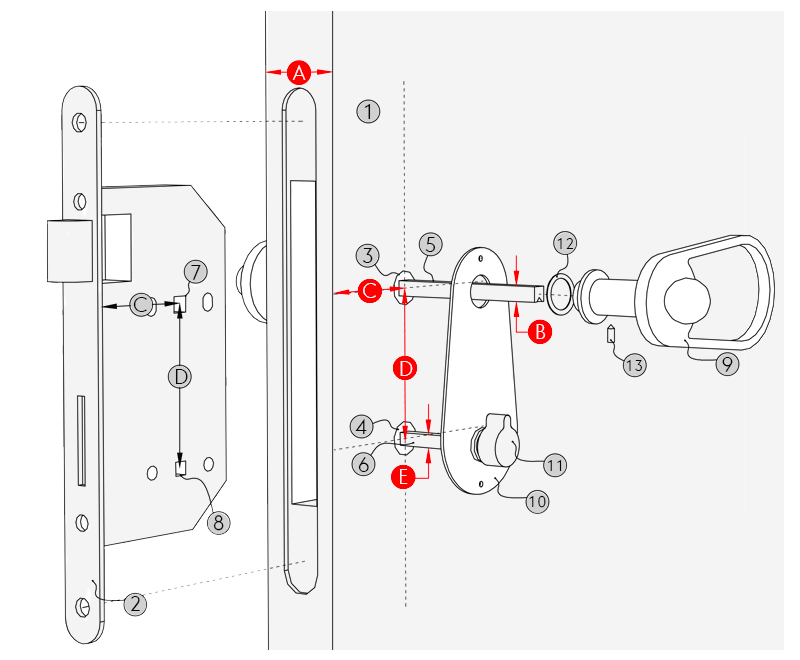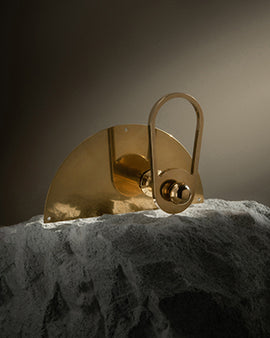Our advices
What, you're not going to be impressed by a simple door? Before placing an order there is a bit of technique to assimilate, it's true, but we explain everything to you. Stay zen, bring a tape measure and check the following points...
Look at your door.
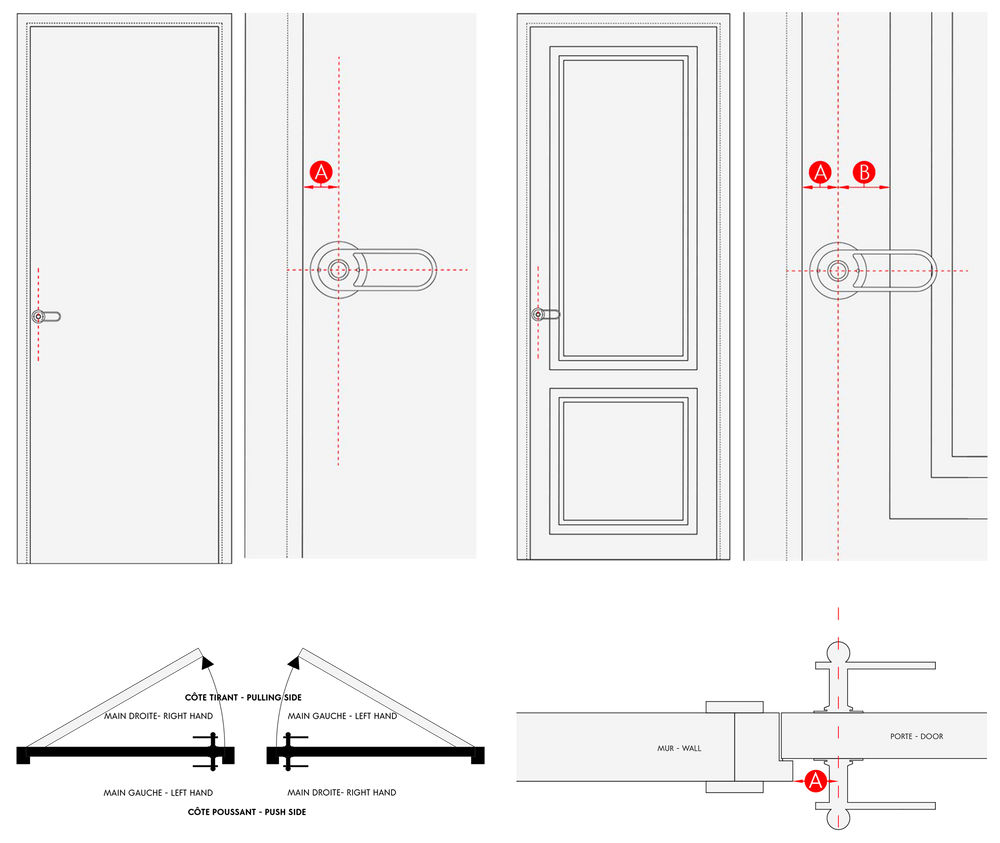
Make sure the plate and handle are suitable
perfectly at your doorstep.
Measure the space between the center of the handle and the edge of the push side door. See (A) in the drawings.
If the lock is not yet installed or selected, you will choose the axis according to the plate.
Some plates are more elegant when they are close to the edge of the door (axis at 40 mm).
Others deserve to be further away (axis at 50 mm).
If you select a large plate for a deadbolt lock: check the installation direction, RIGHT HAND or LEFT HAND .
Passage door, interior door, wooden door
After measuring the space between the edge of the closed door on the push side and
handle shaft (A) , check the gap between the handle shaft
and the molding (B) on the molded doors.
Metal door, patio door and entrance door
Each case is different. We have solutions, contact us .
The lock of your door
Embedded lock?
(1) The door.
(2) The lock.
(3) The opening in the door which will receive the handle.
(4) The drilling, optional, which will receive an L key or a locking bolt.
(A) The axis of the lock: distance between the edge of the door and the axis of the
handle.
(B) The center distance of the lock: distance between the axis of the handle and the axis of the key (L key, locking or cylinder key).
Rim lock?
Each case is different. We have solutions, contact us.
(1) The door.
(2) The wall-mounted lock box.
(3) The location of the handle.
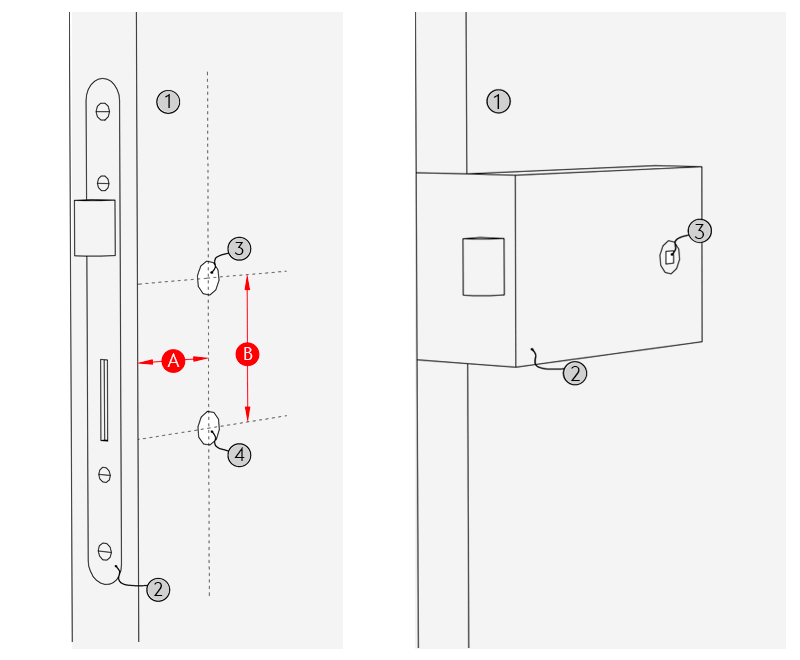
-
Simple handles
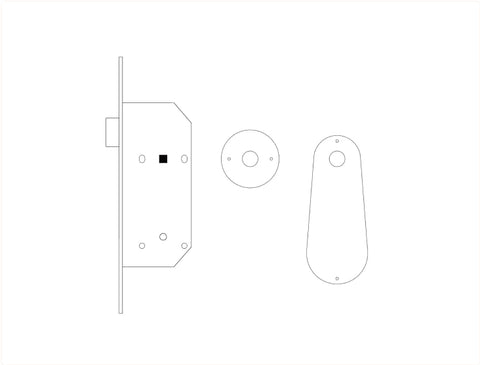
-
Conviction

-
L key
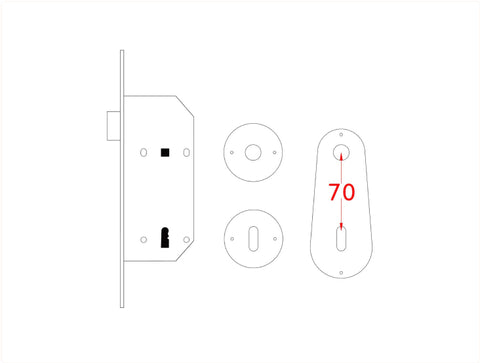
-
Cylinder key

The square of your door
(5) The square of the handle.
Our handles are equipped with 7 mm squares (standard
French).
If your lock is not yet installed, order a French lock with a standard 7mm square.
If your lock is already installed, measure the square in
place.
If your lock requires an 8 mm square, add a 7 mm → 8 mm adapter on the square.
If your lock requires a 6mm square, add a
6 mm → 7 mm adapter in each of the handles.
The square is inserted into the follower (7) of the lock (2), it is used to connect the handles located on either side of the door.
It is he who activates the lock.
Its length is defined by the thickness of the door.
The length of the square offered in our packs is suitable for doors 40 mm thick. If your door is thicker or thinner, you can optionally choose a square suitable for your door.
(6) The condemnation square.
It is used to link locking and unlocking on either side of the door.
Our locking and unlocking are equipped with 6 mm square (French and European standard).
If the locking follower (8) of your lock prefers an 8 mm square, you will need to provide an adapter (or sheath).
In France and Europe, the locks require a 6 mm square of condemnation.
Attention: in the United Kingdom this square measures 5 mm, it will be necessary to provide an adapter (or sheath).
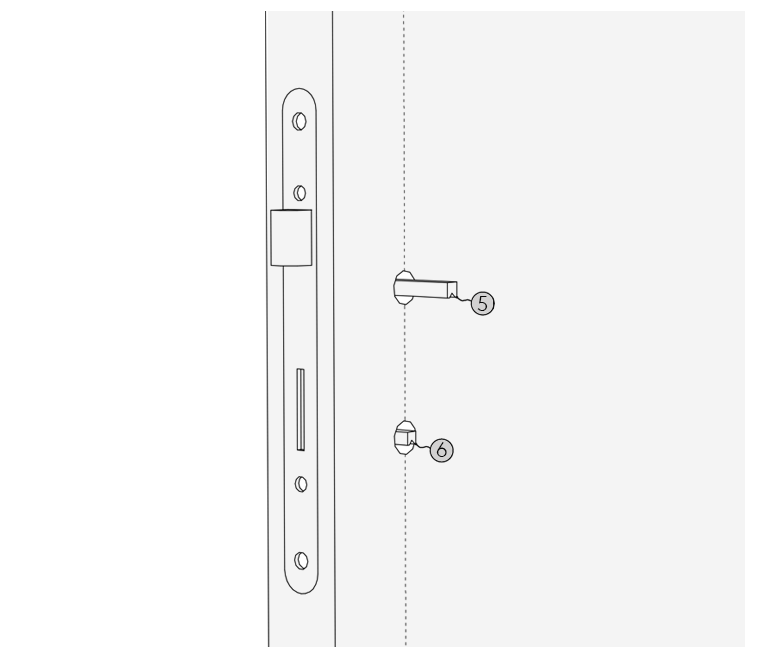
Details and vocabulary
A - Measure the thickness of the door.
B - If your door is already fitted with a lock, check the thickness of the square.
If you have not yet chosen your lock, prefer a French lock with a 7 mm square.
C - Check the axis of your lock.
This is the space between the edge of the door and the axis of the handle, it is usually 40mm or 50mm. This dimension will allow you to validate the plate of your choice (some plates are more elegant on locks whose axis measures 40 mm, others on 50 mm).
D - If you choose a large plate, check the center distance of your lock.
This is the space between the axis of the handle and the axis of
locking or of the key L or of the cylinder (see sketch).
In France the standard is 70 mm, our large plates are compatible with this standard.
If the center distance of your lock is higher or lower, prefer small separate plates, or contact us, we will certainly have a solution.
E - If you have chosen a deadbolt lock, check the thickness of the deadbolt square.
In Europe, its thickness is 6 mm. In the UK it is usually 5mm thick.
1 – The door.
2 – The lock.
3 – The opening in the door that will receive the handle.
4 – The drilling, optional, which will receive an L key or a locking bolt.
5 – The square.
It fits into the follower of the lock. It is used to connect the handles located on either side of the door. It is he who activates the lock. Its length is defined by the thickness of the door.
6 – The condemnation square.
It is used to link locking and unlocking on either side of the door.
7 – The lock follower receives the square.
In France, it is planned for a square of 7 mm. If your lock follower prefers an 8 mm square, you will need an adapter (or sheath).
8 – The follower of condemnation receives the square.
In France, it is planned for a square of 6 mm. If your lock follower prefers a 7 mm square, you will need an adapter (or sheath).
9 – The handle.
10 – The decorative plate.
11 – The condemnation on the decorative plate.
12 – The nylon washer.
13 – The needle screw.
She fixes the handle on the square.
